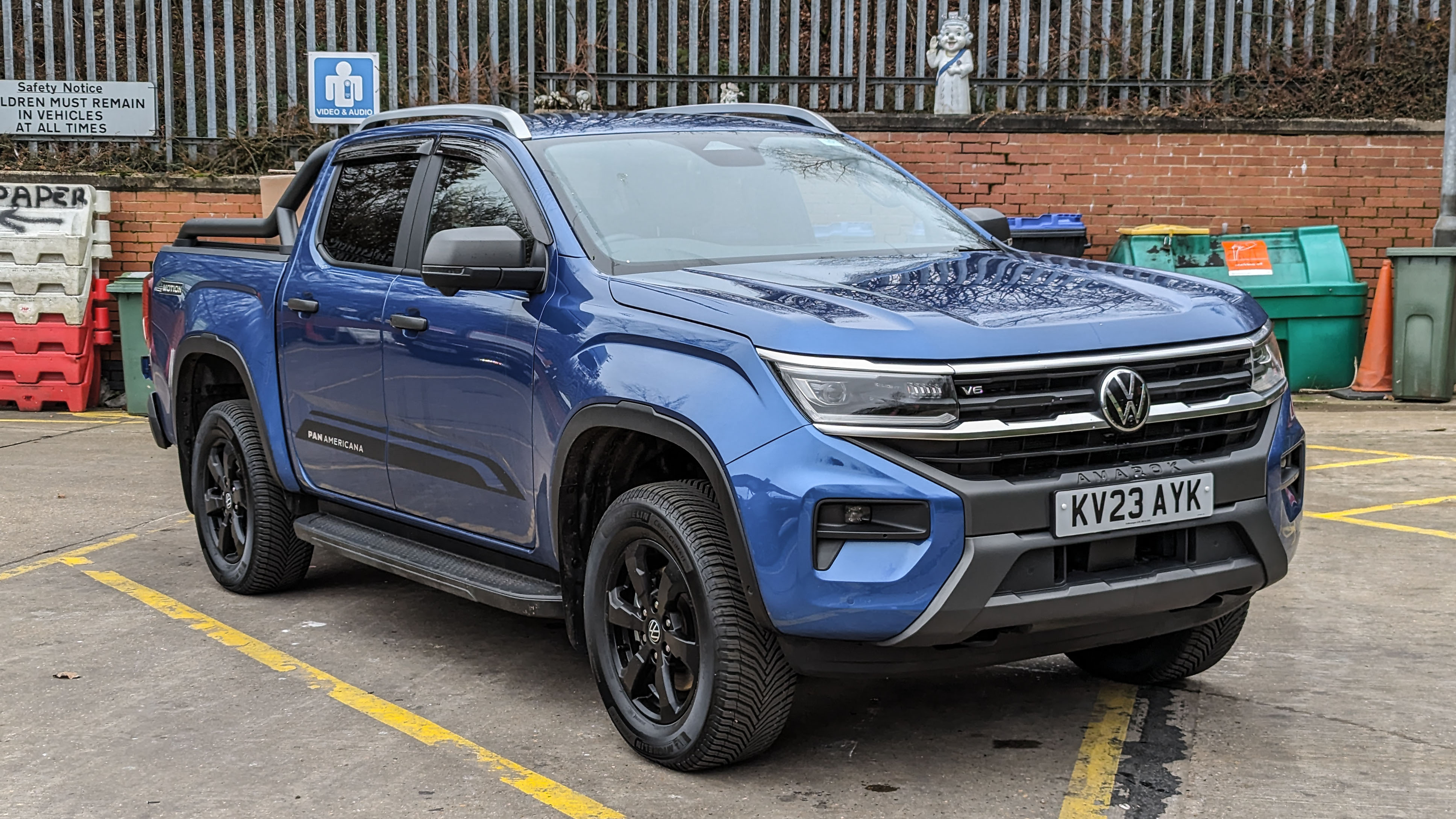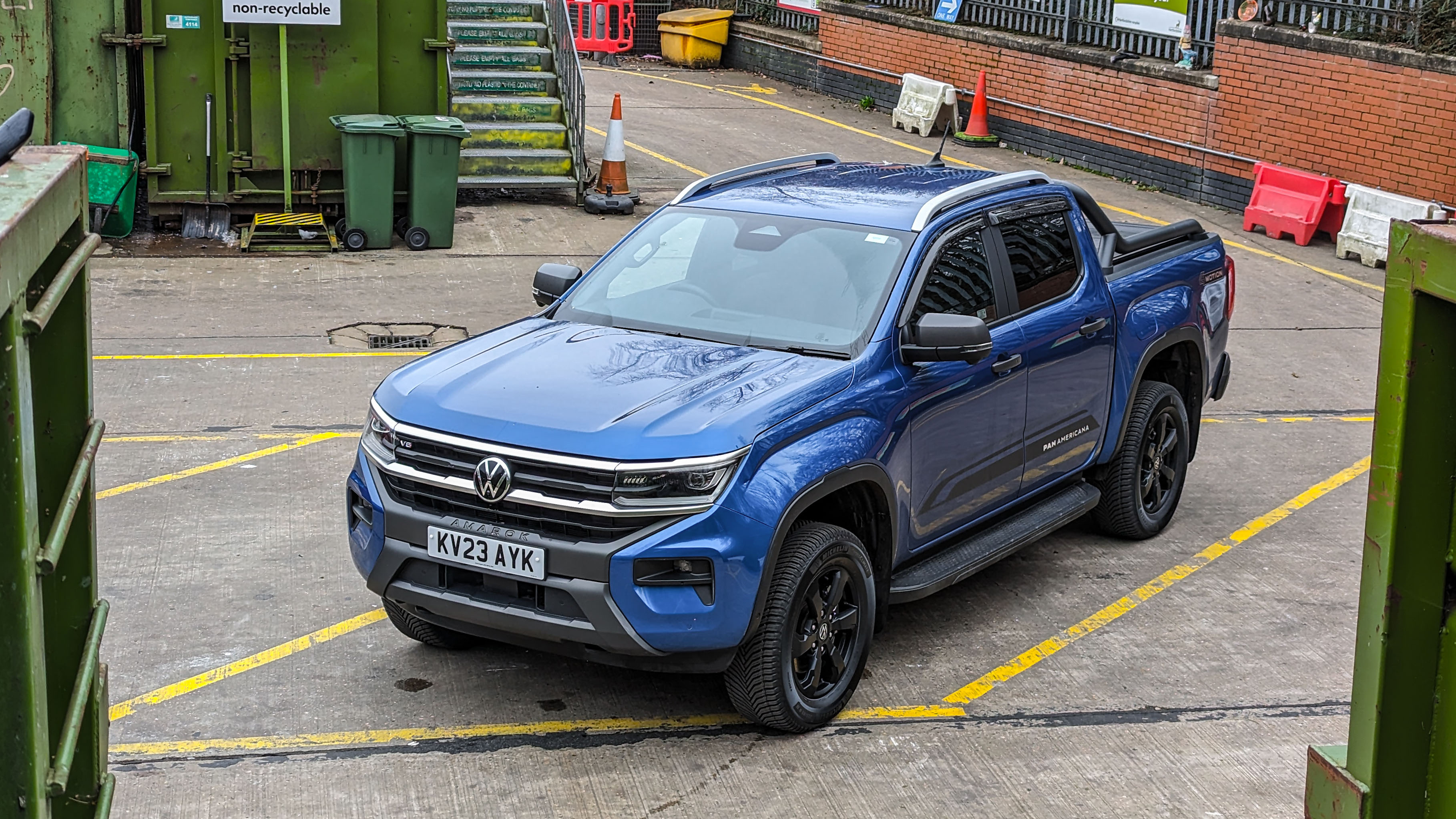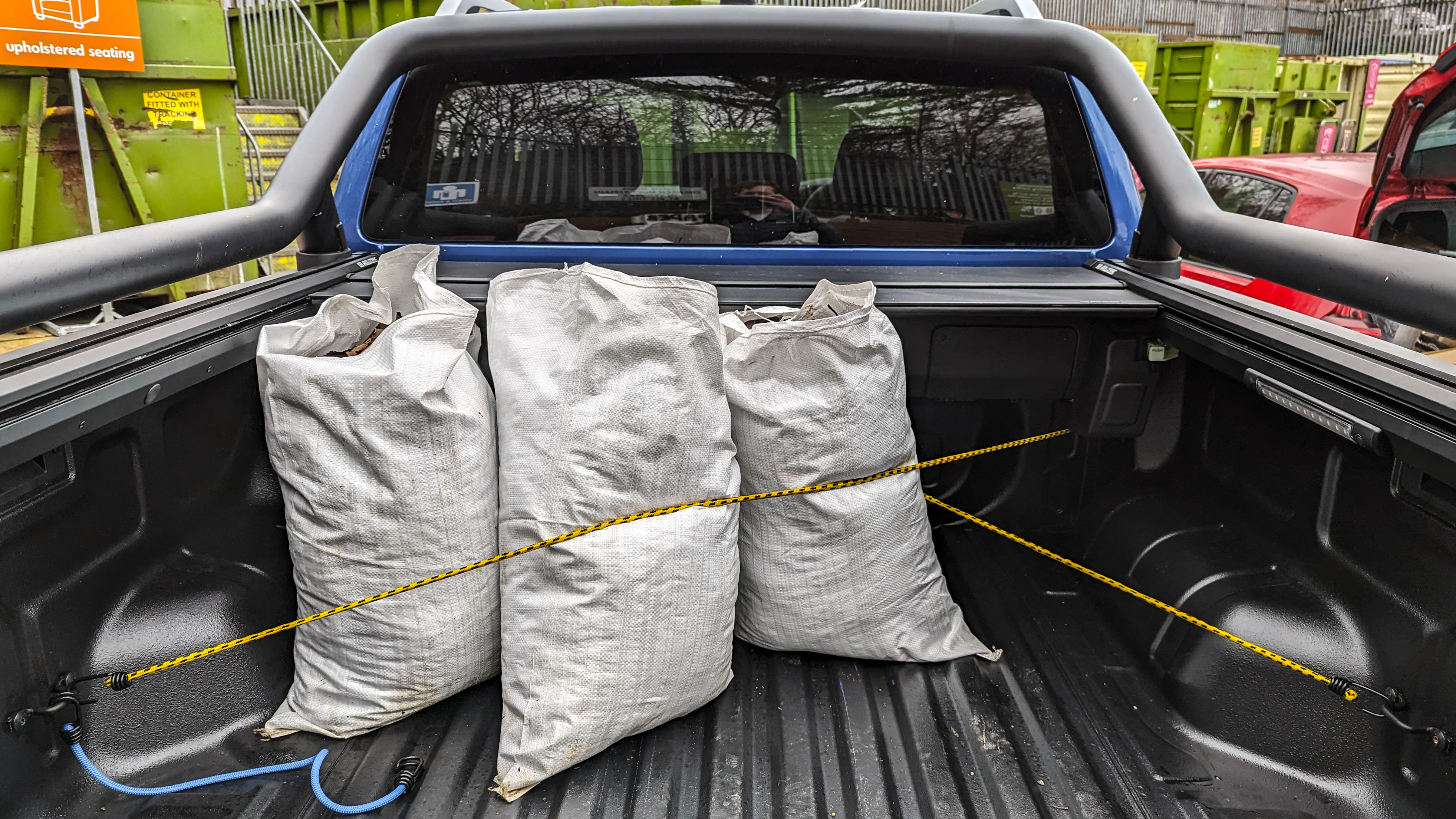
Volkswagen Amarok - long-term review
£55,440 / as tested £57,231 / PCM £599
Is a Volkswagen Amarok the ultimate tip-run vehicle?
Sure, knocking two-tenths off your PB around Silverstone might be a blast. Conquering the Cliffhanger Trail in a stock Jeep Wrangler certainly gets the heart pumping.
But if you want to feel ultimate automotive satisfaction, deep four-wheeled joy of the highest order, nothing beats rolling up at your local tip – sorry, municipal recycling facility – in a pick-up piled high with skip-fodder.
Laugh! as you lower the tailgate to liberate your recycling with ease! Smirk! as your fellow tip-goers struggle to extricate giant boxes and bags from the constrictive boots of their regular motorcars! Feel a smug sense of pride! as the grizzled facility operatives give the faintest nod of approval to your truck!
The Amarok’s a great tip-run machine, that’s what I’m saying. Volume? Not an issue. Its load bed measures 162cm long and 158cm wide, and spans 122cm between the arches, large enough for two Euro pallets. Or, put another way, ‘an entire sheds-worth of detritus’.
Slight issue: that nice smooth load-bed floor means anything you put back there is liable to slide giddily around on its way to the tip, so if you’ve got trash you’d prefer stayed upright – in this case a load of open dumpy bags stuffed with mulchy old leaves – you’ll need to rig some sort of bungee-cord restraint system to the lashing hooks.
Even so, it’s a far more convenient experience than trying to line the rear of your 4x4 with a bunch of musty tarpaulins to save getting gunk on your upholstery. And if those mulchy old leaves do end up oozing into the load bed, no worries. Just sluice it all out like a mad-eyed abattoir worker.
Quick housekeeping note. If you’re planning on using your pick-up for tip runs, you may need to apply for a permit – I did for my local centre, and it seems to be the same for most other council-run facilities in England at least. Providing you’re only planning on ditching genuine household waste, and not a job-lot of industrial asbestos, it’s free (at least it is around here) and painless to acquire the permit online, though you’re limited to a dozen tip-trips in a twelve-month period. Behold: actual helpful advice!
Here’s another admin quirk about the new Amarok, and one that might land the unaware in a whole lot more trouble than a barney with your local recycling operative: how fast you’re actually allowed to drive it.
Because it’s classed as a light commercial vehicle, the ‘Roc has to adhere to the UK’s commercial speed limits. Which are the same as passenger-car limits in towns and on motorways, but 10mph slower in national speed limit zones – meaning 60mph on a dual carriageway, and 50mph on a single carriageway.
Might not sound too complicated on paper, but as the average British road changes speed limit at least six times every mile, it’s a constant headache working out exactly how fast you’re permitted to go. Thankfully the Amarok’s dash speed limit warning seems to get it right most of the time.
Just to make things a little more complicated, not every new Amarok is classed as a commercial vehicle. The critical factor is whether it has at least a 1000kg payload: this PanAmerica version does (just), but the top-spec Aventura doesn’t, because reasons. Better for getting your foot down on the dual carriageway, worse for those CV tax breaks. The Amarok’s not alone here: other one-tonne pick-ups tread the same tightrope.
The whole speed limit thing is, in short, a bit of a minefield. If you’re unsure whether your pick-up is registered as a car or an LCV – and let’s be honest, it’s always nice to know how fast you’re legally permitted to drive – check your V5 logbook, specifically section J: Vehicle Category. If it says M1, that’s a car. If it’s N1 or N2, that’s a commercial vehicle. Adjust your velocity accordingly. More actual helpful advice!
Featured

Trending this week
- Car Review
BMW iX3






